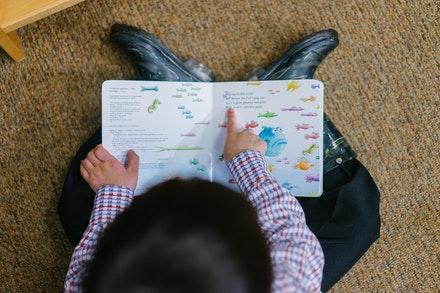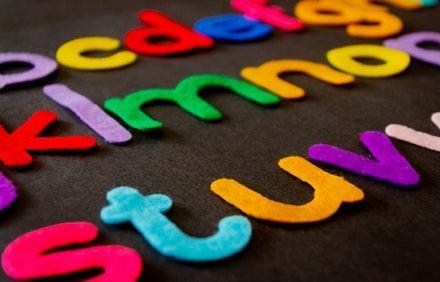Speech delay and Autism Spectrum Disorder (ASD) may look similar in toddlers. Identifying the key differences can help with finding the most appropriate intervention to support your child. Research in this area has identified some of these differences, as well as the similarities between the two diagnoses.
- What Are The Similarities Between Children With ASD and Speech Delay?
- What Are The Differences Between Children With ASD and Speech Delay?
In the second year or early in the third year of life, late language development is more readily identified [1] and concerns about language development can leave parents desperately seeking support. It can be difficult to tell the difference between ASD and speech delay, particularly where communication skills are limited.

Children who are developing at a typical rate across all other developmental domains, however present with a limited range of sounds, words or sentences in comparison to their peers may have a speech and/or language delay. That means that the other developmental domains, such as motor skills, play & leisure skills and social skills aren’t likely to be affected.
A study by Kjellmer, Fernell, Gillberg, Norrelgen (2018) showed that nearly 60% of children (from a group of 83 4-6 year olds) with ASD had moderate–severe language difficulties. Nearly half presented with combined expressive and receptive language delays and a majority also had problems with different sounds and how they come together [2].
Children with ASD also have different or delayed social communication and social interactions, and have “restricted or repetitive patterns of behaviour, interests or activities” (DSM-V). However, these can present in a vast variety of ways across children, making it more challenging for parents to identify if their child has ASD or another developmental delay.
What Are The Similarities Between Children With ASD and Speech Delay?
First let’s explore language and in particular ‘expressive language’ and how that can compare with ASD and delay in language development (DLD). Expressive language refers to the way a child uses spoken sounds, words, tells a story and/or uses hand gestures to get their point across to the other person.

It includes the ability to use the correct grammar for example: ‘she had a drink’ rather than ‘her had a drink’ or ‘he went to the park’ rather than ‘he goed to the park’. Expressive language develops over time and by the time a child is 4 or 5 they are typically stringing together sentences quite well and can tell short stories. Expressive language is particularly important as it allows children to express their wants and needs and to communicate and interact with their peers.
Paul, Chawarska & Volkmar (2008) noted that children with ASD and children with speech delay who are assessed on Expressive Language, present with similar language levels, however, both groups were delayed when compared to typically developing peers. Deficits in both groups were in the areas of:
- use of gaze to regulate interactions,
- ability to share emotions with others,
- engagement in back-and-forth interactions,
- rate of communication, and
- range of sounds and words produced [1].
What Are The Differences Between Children With ASD and Speech Delay?
While there are many similarities, the research suggests that children with a speech delay perform higher than those with ASD around non-verbal cognitive skills. This means that they are typically able to effectively use skills such as:
- using gestures to communicate,
- engaging in pretend play, and
- responding to the spoken and non-verbal language of others [1]
They also typically don’t show deficits across other developmental domains, such as motor skills, play & leisure skills, social skills or behaviour.
Children with ASD, on the other hand, may show difficulties or differences across both social and behavioural skill domains. Children with Autism have also been found to use less non-verbal communication, such as facial expressions or gestures, than their typically developing peers or those with Developmental Language Delay (DLD).

Receptive language refers to the ability to understand and comprehend language. In some studies, toddlers with ASD often presented with less receptive than expressive language skills. This means that they could use language that was more complex than they could understand. In the same studies, children with DLD showed the opposite results. Their understanding of language was more advanced than their spoken language would suggest.
While there are several possible explanations for these difficulties and differences, ASD is largely misunderstood and as such, further research in this area is critical to better understand and support people with ASD in the future.

The language abilities of all children vary widely, and children meet milestones in their own time, however, there are some key signs to look for when seeking support for ASD or speech delay.
Children with ASD may display delayed or disordered speech and language, as well as delays or differences across social and behavioural domains. They may have difficulty with generalisation (i.e., the ability to use learned skills (e.g., speech and language skills) across environments, people or contexts) and/or may engage in ‘echolalia’, a pattern of behaviour that includes repetitive speech.
Autism is also 3-4 times more common in boys than in girls [3]. Read more about the differences in autism between girls and boys here.
Although ASD and speech delay can look similar in young toddlers, there are signs to help distinguish the two diagnoses.
As children get older, the differences between the two diagnoses may be easier to notice.
If parents have any concerns around their child’s development, they should consult their GP, Paediatrician or an Early Intervention clinic, who may refer them to a specialist or provide them with information around the next steps to supporting their child.
